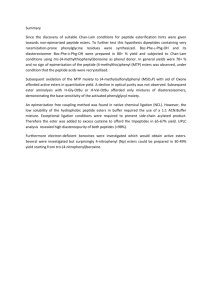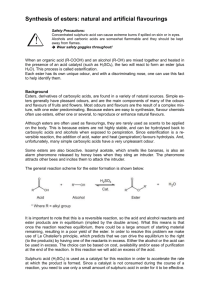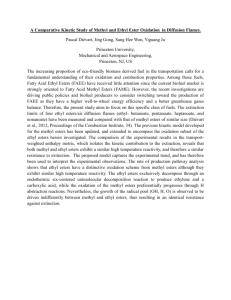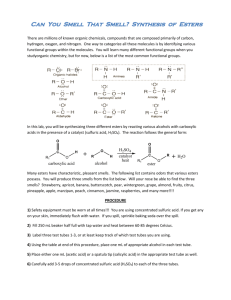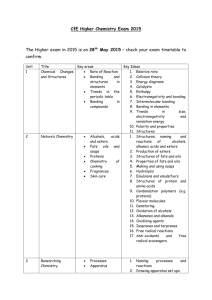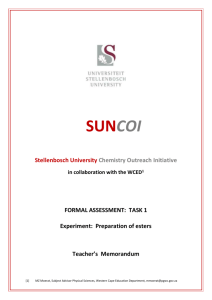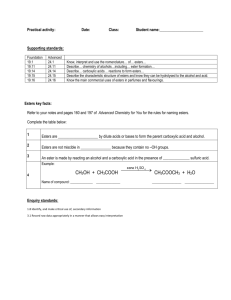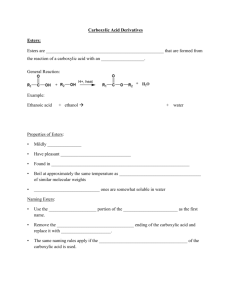Analytical Approaches for MCPD Esters and Glycidyl Esters in Food
advertisement
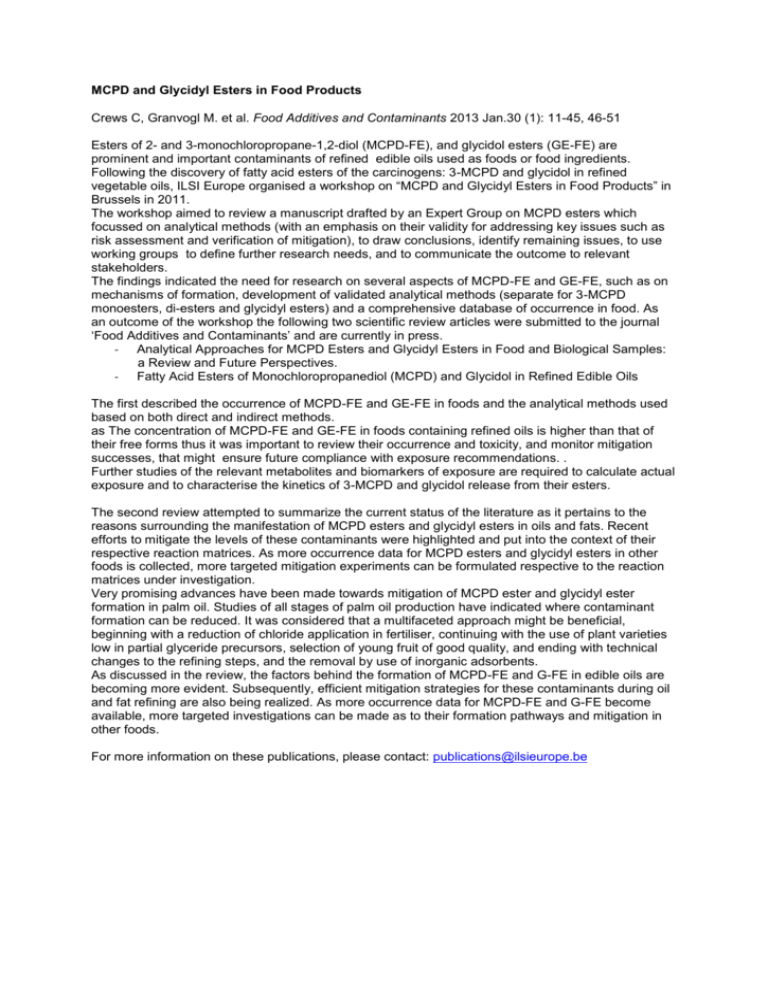
MCPD and Glycidyl Esters in Food Products Crews C, Granvogl M. et al. Food Additives and Contaminants 2013 Jan.30 (1): 11-45, 46-51 Esters of 2- and 3-monochloropropane-1,2-diol (MCPD-FE), and glycidol esters (GE-FE) are prominent and important contaminants of refined edible oils used as foods or food ingredients. Following the discovery of fatty acid esters of the carcinogens: 3-MCPD and glycidol in refined vegetable oils, ILSI Europe organised a workshop on “MCPD and Glycidyl Esters in Food Products” in Brussels in 2011. The workshop aimed to review a manuscript drafted by an Expert Group on MCPD esters which focussed on analytical methods (with an emphasis on their validity for addressing key issues such as risk assessment and verification of mitigation), to draw conclusions, identify remaining issues, to use working groups to define further research needs, and to communicate the outcome to relevant stakeholders. The findings indicated the need for research on several aspects of MCPD-FE and GE-FE, such as on mechanisms of formation, development of validated analytical methods (separate for 3-MCPD monoesters, di-esters and glycidyl esters) and a comprehensive database of occurrence in food. As an outcome of the workshop the following two scientific review articles were submitted to the journal ‘Food Additives and Contaminants’ and are currently in press. - Analytical Approaches for MCPD Esters and Glycidyl Esters in Food and Biological Samples: a Review and Future Perspectives. - Fatty Acid Esters of Monochloropropanediol (MCPD) and Glycidol in Refined Edible Oils The first described the occurrence of MCPD-FE and GE-FE in foods and the analytical methods used based on both direct and indirect methods. as The concentration of MCPD-FE and GE-FE in foods containing refined oils is higher than that of their free forms thus it was important to review their occurrence and toxicity, and monitor mitigation successes, that might ensure future compliance with exposure recommendations. . Further studies of the relevant metabolites and biomarkers of exposure are required to calculate actual exposure and to characterise the kinetics of 3-MCPD and glycidol release from their esters. The second review attempted to summarize the current status of the literature as it pertains to the reasons surrounding the manifestation of MCPD esters and glycidyl esters in oils and fats. Recent efforts to mitigate the levels of these contaminants were highlighted and put into the context of their respective reaction matrices. As more occurrence data for MCPD esters and glycidyl esters in other foods is collected, more targeted mitigation experiments can be formulated respective to the reaction matrices under investigation. Very promising advances have been made towards mitigation of MCPD ester and glycidyl ester formation in palm oil. Studies of all stages of palm oil production have indicated where contaminant formation can be reduced. It was considered that a multifaceted approach might be beneficial, beginning with a reduction of chloride application in fertiliser, continuing with the use of plant varieties low in partial glyceride precursors, selection of young fruit of good quality, and ending with technical changes to the refining steps, and the removal by use of inorganic adsorbents. As discussed in the review, the factors behind the formation of MCPD-FE and G-FE in edible oils are becoming more evident. Subsequently, efficient mitigation strategies for these contaminants during oil and fat refining are also being realized. As more occurrence data for MCPD-FE and G-FE become available, more targeted investigations can be made as to their formation pathways and mitigation in other foods. For more information on these publications, please contact: publications@ilsieurope.be
